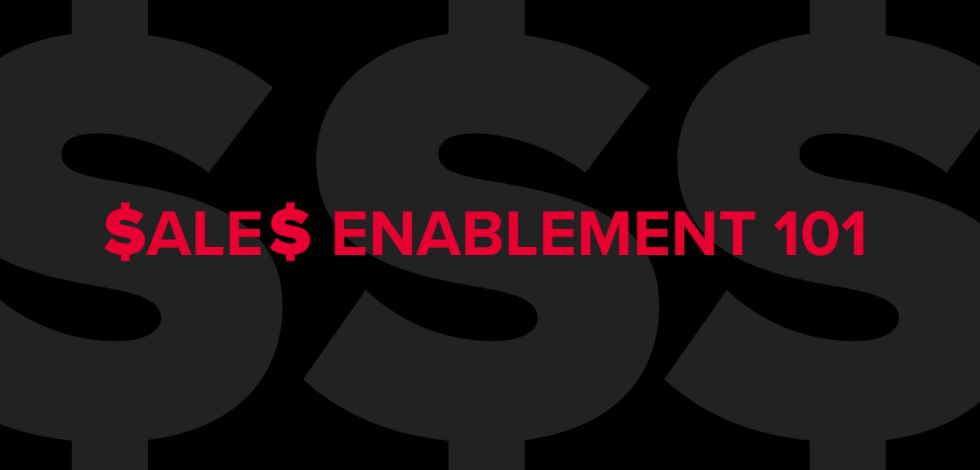As supply chains continue to grow and evolve, your products could be going through dozens of factories, warehouses and vehicles prior to arriving in your customers’ hands. Going through wholesalers, distributors or other middlemen has its advantages, but your overall profit margin—and product quality—could be taking a hit.
This more traditional supply chain model is slowly disappearing as more direct to consumer models gain popularity—with 57 percent of consumer brand manufacturers embracing the model.
While the prospect of a shift to a direct sales model may seem overwhelming for many manufacturers, the power and ubiquity of Amazon demands at least a high-level exploration of its potential.
Amazon’s Growth
Currently, Amazon is the largest online retailer and has created new avenues for businesses to showcase their products. Amazon’s growth is staggering, with a revenue increase from $34.2 billion in 2010 to over $280.5 billion in 2019.
Consider the following:
- Amazon’s share of the United States e-commerce market is 45 percent (Statista)
- 89 percent of buyers agree that they are more likely to buy products from Amazon compared to other e-commerce sites (Feedvisor)
- 56 percent of consumers visit Amazon before any other site when making a buying decision (Kenshoo)
- 60 percent of Amazon’s e-commerce sales come from third-party sellers
(PYMNTS)
Amazon’s growth is projected to continue—and it’s not only a favorable choice for business-to-consumer (B2C) brands but business-to-business (B2B) brands, as well. Amazon can also be an excellent opportunity for your business to diversify its go-to-market strategy.
Interested in growing your business through Amazon? Let’s review how to start selling on the e-commerce giant.
Consumer-Focused Selling on Amazon
Consumers often begin their search for a product on Amazon—and with a vast marketplace, Amazon can help your brand be discovered. Amazon has also built a world-class supply chain that you have access to if you choose.
Your online business deserves to grow, and Amazon can create strong avenues for success; however, it’s important to know the intricacies of its marketplace before getting started.
Registration
Prior to selling on Amazon, your business must set up an account through one of two plans:
- An Individual Plan costs $0.99 per sale and typically works best for businesses that sell under forty items a month and don’t need advanced selling tools or programs. This plan is generally used by small businesses or individual sellers that craft niche items.
- A Professional Plan costs $39.99 a month and is a better fit for businesses that sell large amounts of product and want access to detailed sales reports and programs. This plan is typically utilized by large enterprises that are selling high volumes of product each day.
Fulfillment
Part of the registration process is choosing a fulfillment option—which can be a key differentiator between sellers. This can be split up into two options: Fulfillment by Amazon (FBA) or Fulfillment by Merchant (FBM).
When making this decision, consider what your go-to-market strategy is. Are you in the wholesale or retail space, or is your business primarily online? Then factor in items such as your inventory turnover rate, expenses, logistics and if you want to directly handle customer inquiries.

If your business chooses FBA, you must be signed up for a Professional Plan with Amazon. Your inventory will be handled by Amazon and sent to one of its fulfillment centers where they will manage shipping and returns from customers. It’s worth noting that products that are utilizing FBA are eligible for Amazon Prime—which is an exclusive feature for this fulfillment option.
You should consider choosing FBA if:
- You want Amazon to control your customer support and inventory
- Your inventory turns over quickly
- You don’t have logistics set up
- Your expenses will be higher if you handle fulfillment internally
This selection does come with fulfillment and inventory fees that your company should be aware of. Fulfillment fees are charged per unit sold and include picking and packing your orders, shipping and handling, customer service and product returns. Inventory storage fees are charged monthly and are based on the volume of inventory being held in an Amazon fulfillment center.
Conversely, if your business chooses FBM, you will be responsible for handling the shipping and returns from customers—meaning you’re still in charge of managing your inventory and customer inquiries. Remember that FBM does not come with Amazon Prime, so plan accordingly when managing your supply chain.
Consider selecting FBM if:
- You want to control your customer support
- Your inventory turns over slowly
- You have logistics in place
- You’re able to mitigate the expenses that come along handling fulfillment in house
Whichever route you ultimately choose, your fulfillment strategy is a key piece of finding success on Amazon.
Seller Central
Once you are registered on Amazon, you’ll gain access to your Seller Central account. This will act as your business’ portal for managing items such as product information, inventory updates, payments and other account details. You can even access this information via the Amazon Seller Central mobile app and continue responding to business inquiries on the go.
Product Listing
The first step in starting the sales process is creating a product listing. You can either match an existing listing if another seller is already selling the same product, or you can create a new listing if you’re the first and only seller.
Here are some items you will need to include in your listing:
- A Global Trade Item Number (GTIN), or product ID, in the form of a PC, ISBN or EAN
- A SKU number
- Product title
- Product description
- Product images
- Relevant keywords to help consumers find your product
Along with including the above information, you should be cautious about issues that could negatively impact your listing. Amazon recommends avoiding:
- Variation issues: If your product has multiple color, scent or size variations, then you should look to list all of these items under one product. If the consumer would expect to find these items together, then list them together.
- Image compliance: Images must be at least 500 x 500 pixels. Amazon recommends setting your product against a plain white background.
- Product IDs: These need to meet the requirements for universal product codes (UPCs) and GTINs.
Once your product is listed, customers can view it on a product detail page. On this page, customers can find relevant product information, including the product name, images, variations of the product, descriptions and special offers. Consider what will best help your customers find your product, how your description can answer any questions they may have—and ultimately help them make a purchase.
On average, American small- and medium-sized businesses sell more than 6,500 products a minute in Amazon stores.
–Amazon SMB Impact Report
Amazon even has an outlet for businesses to reach each other through the Amazon Business platform. Amazon Business helps brands with pricing, product content and even has its own version of Prime—and it has proven to be successful for both small and large businesses.
Business-Focused Selling on Amazon
Amazon Business has its own separate interface that allows manufacturers and distributors to target and reach business customers on Amazon.
If you’re already signed up for a professional selling plan through Amazon, you can easily add business features to your Seller Central account. From here, you can create a separate business profile and start listing products under this new page.
Amazon Business comes with its own set of features that offer users unique benefits to help grow their business including:
- Business Pricing: Set a lower price point for other Amazon Business customers than your listed retail price—encouraging other businesses to purchase your product in bulk.
- Quantity Discount: Create a tiered discount model that's specific for products that your business customers prefer to purchase in bulk.
- Business Central Dashboards: Gain a better understanding of how your business is doing and how you can manage it going forward.
- Profile Editor: Establish your brand’s message by sharing information such as your logo, business sector and address.
- Enhanced Product Content: Upload detailed information to your product pages to help your customers gain a better understanding of your products through the use of user guides, specification sheets or comparison charts.
- Accept Requests for Quotes: Support customers in requesting a quantity discount on specific products they would like to purchase—and provide them a quote for any order.
- Quality and Diversity Certifications: Differentiate your business through credentials that are of interest for certain customers, including ownership by a minority, woman or veteran.
- Business Prime. Utilize items such as product savings, purchase analysis guides and invoice payments—while staying ahead of the competition with unlimited, free shipping on eligible orders.
Amazon Business customers in the United States include 55 of the Fortune 100 companies.
–Amazon
Through the use of Amazon Business, you can discover new possibilities and grow your e-commerce efforts.
Advertising on Amazon
Whether you’re a B2C or B2B seller, you can create ads through Amazon Advertising, which operates similarly to Google Ads. Amazon Advertising utilizes keywords, related products and consumer interests to place ads where consumers are most likely to click on them.
It can be challenging to appear on the first page of a search given Amazon’s popularity—but utilizing Amazon-sponsored products can improve your overall rankings. You also only pay for the amount of clicks your ad gets, not the total impressions.
Amazon has several advertising solutions that your business can choose from:
- Amazon DSP: Reach audiences on both Amazon sites and apps, as well as third-party exchanges.
- Amazon Live: Create a format for you to engage your audience in real time and help them make purchasing decisions.
- Audio Ads: Extend your business' reach through Amazon Music with the utilization of 10- to 30-second ads in between songs.
- Posts: Help consumers discover your brand as they scroll through product categories on Amazon.
- Sizmek Ad Suite: Optimize campaigns across various channels on a global level.
- Sponsored Brands: Highlight your brand’s logo and product portfolio.
- Sponsored Products: Promote individual product listings.
- Sponsored Display: Reach your audience through display ads on Amazon product pages.
- Stores: Create immense shopping destinations for your consumers; think of this as a landing page for your Amazon shop.
- Video Ads: Tell your brand’s story or product’s story through the use of video.
Your advertising efforts will be powered by Amazon’s own internal search engine, A9. One key difference between A9 and Google’s search engine is that A9’s algorithm puts strong emphasis on sales conversions—meaning products that generate more sales will be pushed toward the top of the results page.
To find success within A9, it’s important to think like a buyer. Ask yourself these questions to help guide your Amazon SEO strategy:
- What will help consumers find your product?
- What will encourage consumers to click on your products?
- What items will help consumers purchase your product?
- Which keywords will you highlight in your product title?
Advertising on Amazon is critical to your brand’s success on the platform. Understanding how each advertising solution can help you and how A9 operates will be beneficial to your brand’s performance.
Wrapping it Up
Amazon has experienced unprecedented growth over the past ten years, and there are no signs of it slowing down. With various features to help your business succeed, your e-commerce business can rapidly expand.
Take the Next Step
Concentrek has an experienced team that can help you form a concrete Amazon sales strategy. Reach out to us today!




